The metaverse has captured the attention of many. Mark Zuckerberg envisions a world where people “jump into” the virtual world to “do almost anything”. But doing things comes with risk, and risk needs to be priced. So where does insurance come into these big plans?
No one likes change. In fact, it seems humans are hardwired to resist it, or at least be apprehensive about it. We even have a phrase, “If it isn’t broke…don’t fix it.”
Yet, our society and technology are constantly changing. Take the emergence of the metaverse and Web 3.0, for example. For many, these are a welcome and exciting change, bringing along with them a wealth of opportunity. For others there is scepticism. How does it work exactly? Haven’t we got enough to think about with the real world as it is?
This scepticism is arguably most rife in the insurance industry. By its very nature, the industry is risk averse. And there’s a lot of risk involved in setting up an alternate reality in which people take on virtual versions of themselves to work, live and play.
If the metaverse is designed to closely mimic the real world and the activities we engage in, that means people will buy things. Houses, pets, clothes, art. This also means people will steal things, and accidents may happen. As sceptical as they may be for now, insurers cannot look away forever.
“Talk of insuring the metaverse is very speculative at the moment,” according to René Schoenauer, director of product marketing in EMEA at Guidewire, a software platform for property & casualty insurers.
Sebastian Schmoeger, managing director and partner at BCG, a management consulting company, agreed that so far, the economic relevance for insurance companies in the Metaverse is still in its early days, and insurance is not yet at the forefront of users’ minds. “It is not yet a big enough economy where investment rivals other industries,” he said. Despite this, he added that many insurance players are still tentatively keeping an eye out.
Not only is the metaverse not yet a sizeable economy, but the insurance industry is characteristically being a bit slow
“There is still a lot of scepticism and given we’re an industry based on data and actuarial science, that is to be expected,” said Edward Halsey, co-founder and COO of InsurTech hubb, adding that insurance industry players are “likely to be followers rather than pioneers when it comes to such technologies.”
The million-dollar question
Despite the purchases users’ making in the metaverse being entirely digital, they are still assets with real value. So how do you underwrite this? Halsey said this is the “million-dollar question”, particularly when considering the volatility of NFT valuations.
According to James Kruger, vice president, head of Insurance UK at Capgemini, there can be various risks associated with NFTs, such as liability, defamation, ransom, and more. He suggested that NFTs may be underwritten in a similar manner to how property and home insurance is, whereby the policy is underwritten based on cost of replacement.
Another way to look at it, Kruger continued, is how specialty insurers underwrite unique paintings and antiques. “With the fundamental premise of indemnity, the NFT’s purchase value is the basis for the coverage. From a tech standpoint, NFT is the digital token and the artwork to which it points to (let’s assume) is stored on the NFT marketplace where it’s being sold.” This means if the marketplace’s network is compromised, then the artwork may be lost. Following this route, some inspiration could be taken from the cyber insurance framework to work out the meta liability model which covers the NFT Marketplace, Kruger added.
Although in principle the value of a digital piece of artwork should be no different to the physical one, hubb’s Halsey said, the practicalities of valuing and underwriting something so fluid and volatile particularly without exposing yourself to potential fraud, is “not going to be for the faint-hearted.”
Assessing the man-made risks
As the metaverse is intended to mimic the real world, it may be tempting to think insurance is no different. Yet, Guidewire’s Schoenauer said the metaverse is an entirely man-made environment, free of natural risks such as earthquakes. “This is a potential boon for insurers; here is an environment which by its digital nature produces lots of accurate data on which more exact decisions can be made.”
There are important differences between the real world and the metaverse when it comes to insurance needs. BCG’s Schmoeger said there are a wider range of risks in the real world, “For example, car insurance in the real world would cover vandalism, theft, fire etc. In the metaverse it is more homogeneous. If you own virtual sneakers or virtual real estate the risk is mainly about losing them.” This could mean the metaverse’s variety of insurance products will be smaller.
In some ways, the metaverse may be more predictable than the real world, with fewer physical risks, but it comes with its own set of risks. Schoenauer said, “On the flipside, we are all too aware that digital environments are fallible and under near-constant pressure from hackers… We can say as a statement of fact that, at some point, a metaverse environment will be hacked.”
One foot in the door
It can be argued that insurers should be putting their resources and time into innovating in the products and markets in which they are already present, instead of exploring new ones. This is a question FinTech Global recently put to insurance experts, but in the context of entering new insurance verticals and insuring news risks.
The same can be asked of the metaverse. Could it just be a trend or fad, a distraction from focusing on solving problems and improving the traditional insurance markets?
hubb’s Halsey does not think so. “They said the same thing about the internet once upon a time,” he said. Insurers should not be dismissing any new technologies until they understand how they impact both them and their customers, he continued. “That doesn’t mean going “all-in” from the get-go, but it does mean not accepting words like “fad” based on a surface level understanding. Just be prepared to fail fast.”
However, according to BCG’s Schmoeger, before insurers put significant resources into metaverse-related ventures they must first meet the needs of the digital natives today, and there is a lot still to be done on this front. “Before jumping into the metaverse we need to take the resources and fix the problems we have today,” he said but acknowledged that insurers should “closely monitor the development of the metaverse overall as well as and the underlying technologies.”
At the moment, insurers have little to gain from a presence in the metaverse. At least according to Schmoeger. He pointed out that the younger generation are most likely to be the consumers buying NFTs and exploring the virtual world, and they won’t be thinking about buying insurance.
How could insurance in the metaverse impact the real world?
Not only is it currently unclear as of yet whether insurers stand to gain a great deal from a metaverse presence, but they also face significant barriers to entry.
Guidewire’s Schoenauer said that understanding this new virtual world is going to require the ability to process high volumes of data to make real-time decisions. This means leveraging cloud-based systems and advanced data analytics using AI and machine learning.
“Insurers are still in the process of fully adopting such technology,” Schoenauer said.
Despite this, he added, extending these technologies to insure new risks in the metaverse could also mean better outcomes for insuring risks in the real world. When considering that the metaverse promises to bring imaginative and creative ways of doing the things we already do, insurance is no exception.
The metaverse is indeed an opportunity to bring more innovation to the insurance industry, according to Capgemini’s Kruger. “The insurance industry has generally been a laggard in adoption of new technologies, leading to a gap in customer expectations. The metaverse can offer creative ways to educate, advise customers through gamification and give them a curated experience,” he said.
A few InsurTech players like Ditto and Digit are already simplifying, gamifying and offering micro coverages in Web2 format, Kruger added, but a lot is left to be desired.
Where there is a particular opportunity for innovation, according to Guidewire’s Schoenauer, is in products. “Digital thieves don’t need to charter a private getaway jet to escape halfway around the world with their loot, so prevention is better than cure.” He said insurers can help prevent digital theft by creating new offerings that protect customers from harm, instead of “picking up the pieces after a scam.”
Another area in which the metaverse could give impetus to innovation, and is somewhat obvious, is technology. BCG’s Schmoeger pointed to the example of digital twins for buildings.
Today, satellite images are being used to develop digital copies that can be used for underwriting decisions and determining policies. “Now imagine detailed digital twins being available as a by-product of the design process that can be used for virtual risk prevention, underwriting, and even IoT enabled claims management,” he said. This would enable agents to better understand the risk of what is happening in the real world, Schmoeger added.
To join or not to join?
Given that insurance is fundamentally about managing risk and the metaverse is a new and potentially risky venture, coupled with the fact many traditional insurers are tied to legacy systems, with dynamic InsurTechs entering the market only relatively recently, the industry could be forgiven for not going “all in” just yet.
Looking ahead however, what do those who continue to kick the metaverse down the road, stand to lose, versus those that take the leap?
hubb’s Halsey said that as buyer expectations change, the industry is going to need to show the ability to move with them or one of two things will happen. “Consumers will find another means of protecting themselves, or a new entrant will come in and eat all of our lunches.”
Capgemini’s Kruger seemingly agreed. He said we are already seeing insurers wanting to invest in the metaverse not only as a branding and engagement tool, but as a tangible business growth opportunity. “It’s safe to say that the metaverse can disrupt the value chain of insurers in ways never thought possible before.” At a minimum, the metaverse will create a wide range of new businesses, he added, which all need traditional insurance products. “Insurers will need to understand and monitor the metaverse industry and its trajectory to win market share.”
Similarly, Guidewire’s Schoenauer said preparing for the metaverse will help insurers both speed up their digital journeys and equip them with a competitive edge. “At a basic level, the metaverse is an expansion of the digital spaces we occupy today across social media, online games, streaming, or video calls,” he said, “If an insurer is ready for the metaverse, it is most likely also well equipped to deal with their customers’ existing risks; preparedness for the metaverse would probably make them a market leader in terms of customer service, product innovation, and understanding of risk.”
For BCG’s Schmoeger, it is still too soon to tell exactly what insurers should be doing. He said it really depends on the economic importance of insurance in the metaverse, “and at the moment we really can’t tell – it is difficult to say whether it could become the second biggest economy and if there is any value for building businesses there.” The real challenge here, he added, is determining whether it is of enough value to join and when to prepare.”
Read the article here.
Copyright © 2022 FinTech Global


